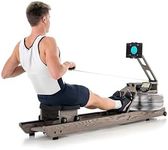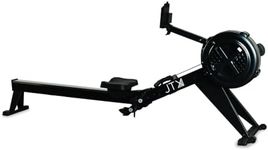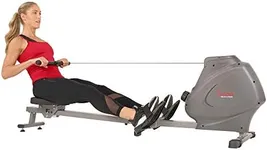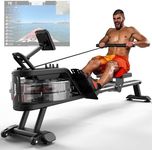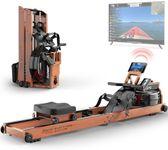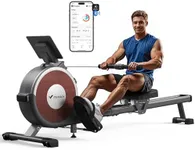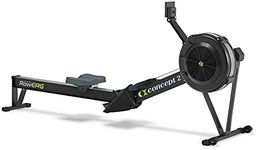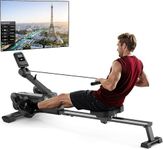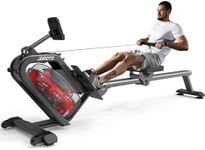Buying Guide for the Best Rowing Machine For Heavy People
Choosing the right rowing machine is crucial for ensuring a safe, effective, and enjoyable workout, especially for heavier individuals. When selecting a rowing machine, it's important to consider several key specifications that will impact the machine's performance, durability, and comfort. Understanding these specifications will help you make an informed decision and find the best fit for your needs.Weight CapacityWeight capacity refers to the maximum user weight that the rowing machine can safely support. This is important because using a machine that cannot handle your weight can lead to damage and potential injury. Rowing machines typically have weight capacities ranging from 250 to 500 pounds. For heavier individuals, it's crucial to choose a machine with a higher weight capacity to ensure stability and longevity.
Frame MaterialThe frame material of a rowing machine affects its durability and stability. Common materials include steel, aluminum, and wood. Steel frames are known for their strength and durability, making them a good choice for heavier users. Aluminum frames are lighter but still offer good stability, while wooden frames provide a more aesthetic appeal and can also be quite sturdy. Heavier individuals should prioritize machines with robust steel frames for maximum support.
Seat Comfort and SizeThe seat on a rowing machine should be comfortable and appropriately sized to accommodate your body. A well-padded, larger seat can provide better support and reduce discomfort during longer workouts. Look for seats with ergonomic designs and sufficient padding. For heavier users, a wider and more cushioned seat is recommended to ensure comfort and prevent pressure points.
Resistance TypeRowing machines use different types of resistance, including air, magnetic, hydraulic, and water. Each type offers a unique rowing experience. Air and water resistance machines provide a more natural rowing feel and are often preferred for their smooth operation. Magnetic resistance machines are quieter and allow for adjustable resistance levels. Hydraulic resistance machines are typically more compact but may not offer the same level of durability. Heavier users might prefer air or water resistance machines for their robust build and realistic rowing experience.
Footrests and StrapsFootrests and straps are essential for securing your feet during rowing. They should be adjustable to fit different foot sizes and provide a secure grip. Look for machines with large, non-slip footrests and adjustable straps to ensure your feet stay in place during intense workouts. This is particularly important for heavier users to maintain stability and prevent slipping.
Monitor and Tracking FeaturesA good rowing machine should have a monitor that tracks essential workout metrics such as time, distance, strokes per minute, and calories burned. Advanced models may offer additional features like heart rate monitoring and connectivity to fitness apps. These features can help you track your progress and stay motivated. Choose a machine with a clear, easy-to-read monitor that provides the data you need to achieve your fitness goals.
Stability and Build QualityStability and build quality are critical for ensuring a safe workout, especially for heavier users. A stable rowing machine will have a solid, well-constructed frame and a wide base to prevent tipping. Check for machines with high-quality components and a reputation for durability. Reading user reviews can also provide insights into the machine's stability and build quality.

